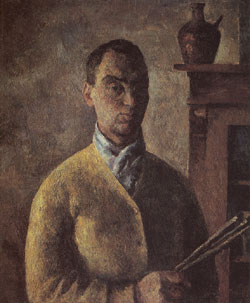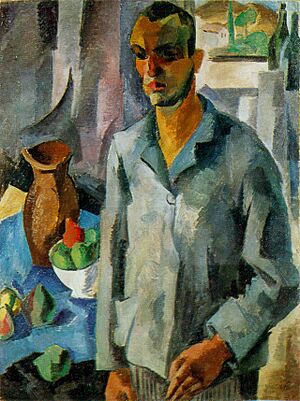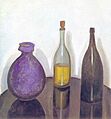Robert Falk facts for kids
Robert Rafailovich Falk (Russian: Роберт Рафаилович Фальк, October 15, 1886 – October 1, 1958) was a Russian and Soviet painter. He was known for his new and experimental art style, often called avant-garde.
Robert Falk's Life Story
Robert Falk was born in Moscow, Russia, in 1886. He started studying art when he was young. From 1903 to 1904, he learned from artists like Konstantin Yuon and Ilya Mashkov. Later, from 1905 to 1909, he studied at the famous Moscow School of Painting, Sculpture and Architecture. There, his teachers included Konstantin Korovin and Valentin Serov.
In 1910, Falk helped start an art group called Jack of Diamonds. He was a very active member of this group. They believed that the French painter Paul Cézanne was the only artist truly worth following. They thought much of other art was too ordinary. A special thing about Falk's paintings from this time was how he built up shapes. He used many layers of different paints to make his art look almost like sculptures.
From 1918 to 1928, Robert Falk taught art at VKhUTEMAS, which was a big art and technical school in Moscow. In 1928, he went on a trip to France. It was supposed to be a short visit, but he decided to stay there. He worked in Paris until 1938. Then, he returned to Moscow.
After 1938, Falk lived and worked in Moscow until he passed away in 1958. During these years, he often worked alone. His paintings from this time were in a style called Neo-impressionism. He often used many shades of white, which made his paintings look like his teacher Valentin Serov's later works.
During a time in Russia known as the Khrushchev Thaw, art and culture became more open. Robert Falk became very popular with young painters. Many saw him as an important link. He connected the older art styles of Russia and France from the early 1900s with the new, experimental art of the 1960s. Today, you can see many of Falk's paintings at the New Tretyakov Art Museum in Moscow.
Falk's Artistic Style
Robert Falk was greatly influenced by the famous painter Rembrandt. He learned a lot from Rembrandt's use of color and light in his artworks. Falk even felt that Rembrandt had a bigger impact on his own art than Cézanne did.
Images for kids




